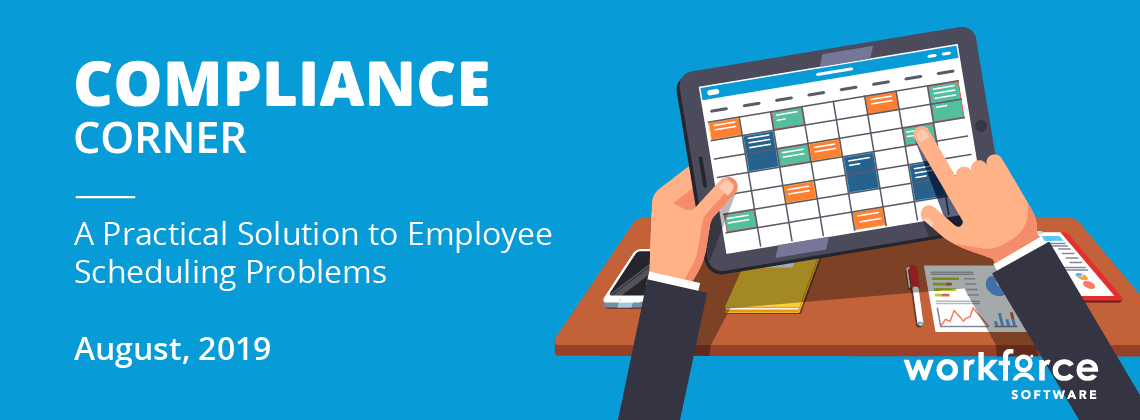A Practical Solution to Employee Scheduling Problems


Paul Kramer
Director of Compliance
Whether an employer is in retail, manufacturing, construction, hospitality, healthcare, educational services, oil and gas, or some other industry, few activities create more anxiety for business managers than employee scheduling. Managers feel the pressure rise when scheduling is ineffective, and worker morale routinely drops when a schedule does match their skills and needs. Here are eight employee scheduling problems commonly faced by employers along with a proven solution to make scheduling easy:
Employee turnover
Workers come and go and bring with them different skills, schedule preferences, family issues, health conditions, and other distinctive attributes that often require employers to shuffle the personnel they assign to shifts.
Employee vacations
Many employees wish to take vacations during the summer and holidays. Nevertheless, too many employees taking time-off at the same time can cause scheduling nightmares for employers and increase costs, especially during the busy season.
Eleventh hour scheduling
Almost every employee occasionally encounters an emergency such as a family illness, car problem, or childcare issue requiring them to miss or be late for work on short notice. These last-minute scheduling dilemmas can create big headaches for managers and disrupt production.

Time-off between shifts
It is a good practice to give employees enough time off between shifts to keep them sharp (e.g. at least 8 hours). And some jurisdictions have passed laws establishing scheduling rules for employees in certain industries. But when workers are few or employees call off work at the last moment, compliance with these rules can be burdensome.
Digitalize Compliance Processes to Reduce Risk
Learn more effective ways to demonstrate compliance with the complex matrix of labor laws, while also keeping costs down and reducing risks.
Too much overtime
Sometimes overtime is necessary to get the job done or to deliver products and services to customers timely. Too much overtime, however, gets costly and can lead to less productive employees. Overtime must be controlled to protect the bottom line.
Unexpected bursts of activity
Unexpected busy periods caused by belated customer orders or a large influx of shoppers, can make it challenging for employers to have enough employees working at the beginning of a shift.

Employee complaints about shift assignments
It is not uncommon for employers to rely on a few trusted employees to perform certain tasks or to work on particular days. Employers must be careful, however, that their scheduling practices are fair and do not favor one group of workers over another or you could find yourself facing a discrimination charge.
Shift swapping
When shift swapping occurs an inexperienced employee may replace an experienced worker or an employee involved in the swap could forget about their new shift, creating workplace disruption.
Make employee scheduling easy
Despite these common problems, employee scheduling does not have to be difficult. To make scheduling easier and more efficient, employers should clear their desks of the mishmash of spreadsheets, time off requests, calendars, and sticky notes and replace them with a robust software solution. Scheduling software ensures compliance with the multitude of rules and regulations affecting shift-based employers and produces flexible and error-free scheduling that meets everyone’s needs, all at the click of a button. Remember, effective scheduling benefits workers, customers, and ultimately the bottom line.
Subscribe to The WorkForce Blog
Learn the art and science of maintaining productive, happy, engaged employees.
More Awesome Content!
Nucleus Insights from WorkForce Customers Research Note
Nucleus Research interviews WorkForce customers who validate why we’re ranked the #1 WFM enterprise vendor for 10 consecutive years.
5 Workforce Management Secrets to Thrive in 2021 and Beyond
Download this eBook to learn the 5 secrets that will help your organization shift from surviving to thriving now and in the future and learn how the right workforce management solution can empower your initiatives.
Streamlining Complex Workforce Compliance Requirements Boosts Productivity
Discover how workforce compliance software helps EMEA organisations navigate complex legislation, enhance compliance and boost operational efficiency.




